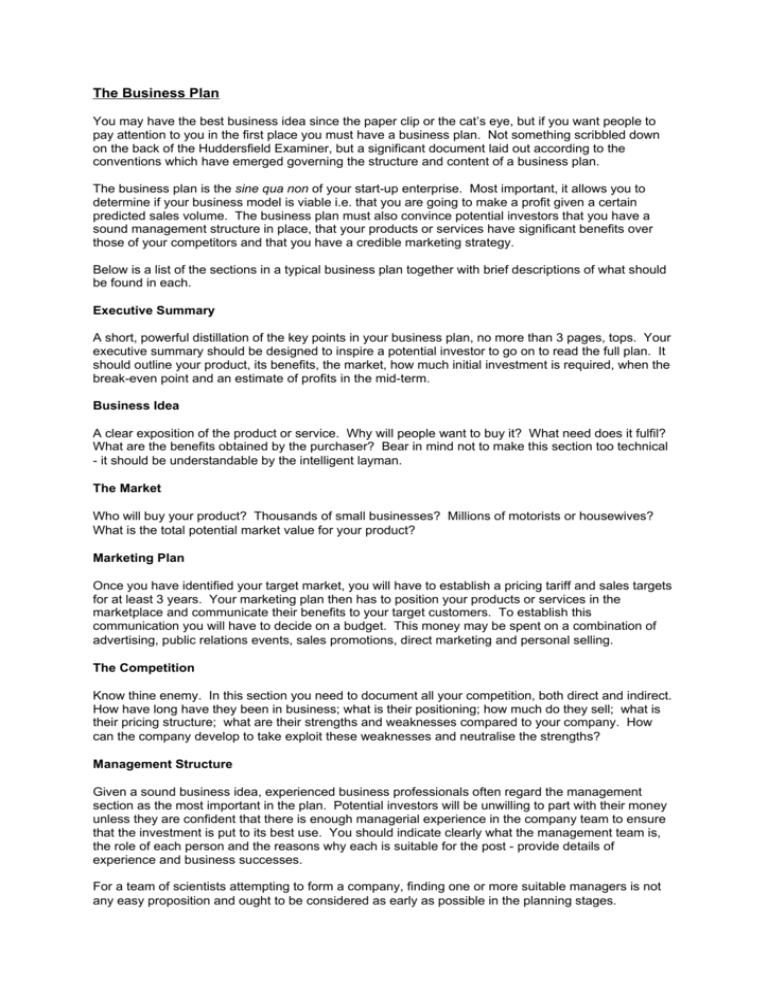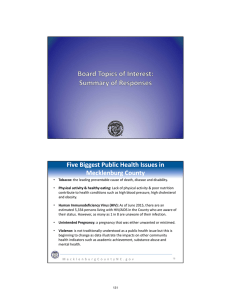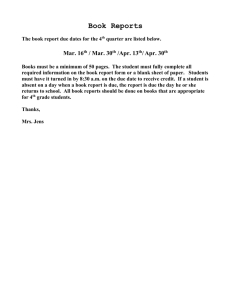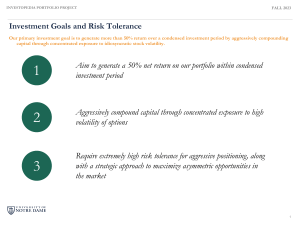Business Plan Basics
advertisement

The Business Plan You may have the best business idea since the paper clip or the cat’s eye, but if you want people to pay attention to you in the first place you must have a business plan. Not something scribbled down on the back of the Huddersfield Examiner, but a significant document laid out according to the conventions which have emerged governing the structure and content of a business plan. The business plan is the sine qua non of your start-up enterprise. Most important, it allows you to determine if your business model is viable i.e. that you are going to make a profit given a certain predicted sales volume. The business plan must also convince potential investors that you have a sound management structure in place, that your products or services have significant benefits over those of your competitors and that you have a credible marketing strategy. Below is a list of the sections in a typical business plan together with brief descriptions of what should be found in each. Executive Summary A short, powerful distillation of the key points in your business plan, no more than 3 pages, tops. Your executive summary should be designed to inspire a potential investor to go on to read the full plan. It should outline your product, its benefits, the market, how much initial investment is required, when the break-even point and an estimate of profits in the mid-term. Business Idea A clear exposition of the product or service. Why will people want to buy it? What need does it fulfil? What are the benefits obtained by the purchaser? Bear in mind not to make this section too technical - it should be understandable by the intelligent layman. The Market Who will buy your product? Thousands of small businesses? Millions of motorists or housewives? What is the total potential market value for your product? Marketing Plan Once you have identified your target market, you will have to establish a pricing tariff and sales targets for at least 3 years. Your marketing plan then has to position your products or services in the marketplace and communicate their benefits to your target customers. To establish this communication you will have to decide on a budget. This money may be spent on a combination of advertising, public relations events, sales promotions, direct marketing and personal selling. The Competition Know thine enemy. In this section you need to document all your competition, both direct and indirect. How have long have they been in business; what is their positioning; how much do they sell; what is their pricing structure; what are their strengths and weaknesses compared to your company. How can the company develop to take exploit these weaknesses and neutralise the strengths? Management Structure Given a sound business idea, experienced business professionals often regard the management section as the most important in the plan. Potential investors will be unwilling to part with their money unless they are confident that there is enough managerial experience in the company team to ensure that the investment is put to its best use. You should indicate clearly what the management team is, the role of each person and the reasons why each is suitable for the post - provide details of experience and business successes. For a team of scientists attempting to form a company, finding one or more suitable managers is not any easy proposition and ought to be considered as early as possible in the planning stages. Operational Plan This should be a description of the logistics of setting up the company (or a new product or service within an existing company). This will include matters such as details of office or factory accommodation and what non-management staffing will be required. You might also include here details of the principle suppliers of your raw materials. You might provide a timeline with specific landmarks for the company’s development over the first 12-18 months. Financial Forecasts A business plan is expected to provide tables showing profit and loss, cash flow and balance sheets for the first 2-3 years of trading. It is important to identify the break-even point - this is where your total sales income equals your cumulative total outgoings to that point. You will need to consult a basic business or accountancy text to see how one should present your financial forecasts properly (for example, see book by Blackwell in Useful Information section). Below is an example of a template for a profit and loss statement, for example. Profit and Loss / £k Company: Jan Feb Mar Apr May Jun Jul Aug Sep Oct Nov Dec Jan Feb Mar Apr May Jun Jul Aug Sep Oct Nov Dec Jan Feb Mar Apr May Jun Jul Aug Sep Oct Nov Dec Sales Cost Overheads Wages Profit Sales Cost Overheads Wages Profit Sales Cost Overheads Wages Profit A more detailed account would include depreciation and interest payments Appendices Supporting documents with a lot of detail like the results of market surveys, or the curriculum vitae of personnel can go into an appendix. Useful Information A useful web site for information on business plans is BizPlanIt (www.bizplanit.com). A good book on the subject is : How to Prepare a Business Plan, Sunday Times Enterprise Guide, 4th Edition, Edward Blackwell, Kogan Page (2002). A very successful guide to all aspects of starting up a new business is: Lloyds TSB, Small Business Guide, Sara Williams, Penguin (1999). Brian P. Clark August 2002 b.p.clark@chem.leeds.ac.uk











